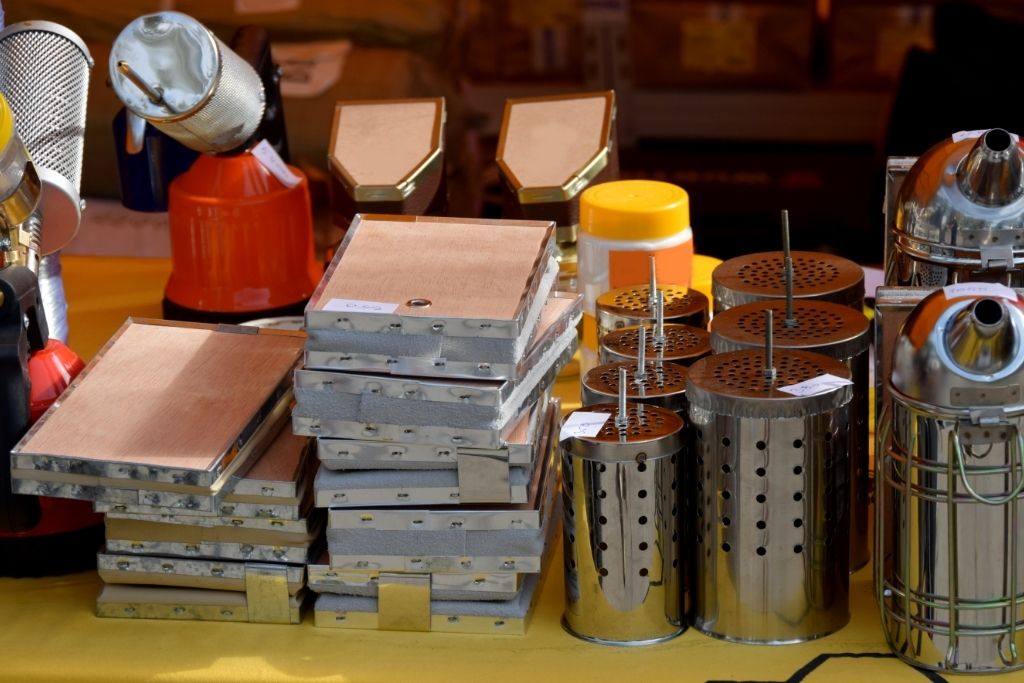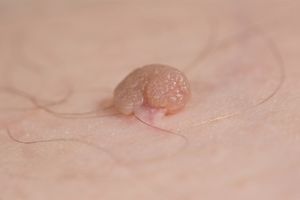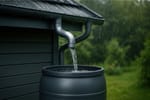You should take comfort in knowing that to become a beekeeper; you really don’t need that much equipment, especially if you plan on keeping your operation small in the beginning.
It’s all pretty standard stuff, but nonetheless, there is still an investment.
The top priorities when it comes to beekeeping are you want to be safe, keep your bees healthy, and use the right equipment for the job.
Some people have developed their own homemade tools, but you don’t need to do that; because you can buy ones that are already tried and tested.
I will share nine basic items you’ll need to get started with beekeeping.
Let’s check them out now…
1)) Hives
You can buy hives of all types, but before you buy, consider how large of a hive you can physically handle.
If you aren’t strong, you will want to purchase smaller hives, unless you can enlist the help of others.
If you’re strong and can pick up a lot of weight or afford tools to help you, then go for a larger hive.
Plus, there are top bar hives that you don’t need to lift. You also need to know whether you just want to support pollination or if you want to produce honey.
You want to make these determinations before you spend any money.
2)) Bees
When you buy bees, you’re really buying a NUC, which is a nucleus colony or a starter hive of bees that consists of five frames.
When you get it home, you remove the empty frames from your hive and add those.
You can also get freebees by attracting them to a hive using lemongrass oil.
3)) Hive Tool
This is a hook device that you use to lift the frames. It has a flat side that is used to scrape off wax and propolis that gets on the frames and hive walls.
Propolis: Is a resin created by bees from a combination of saliva, plants, buds, and various other substances used to seal and protect the cells of the hive
Some people open their hives with screwdrivers, but it’s always nice to have the right tool so you avoid harming bees or yourself.
>> See a great selection of Beekeeping Supplies on Amazon
4)) Smoker
When you want to calm honey bees, you’ll use a smoker. A smoker does what it sounds like; it generates smoke.
That’s obvious, right?
When you put smoke near bees, it turns off their internal pheromone alarms and interrupts their defenses, so that you can move them or collect the honey.
Some people think smokers are used to control swarms, but this is not accurate, as honey bees that are swarming aren’t really as interested in attacking as one might think.
Honey bees only attack when protecting something.
Side note: The smoke produced by a bee smoker doesn’t harm the bees.
5)) Protective Gear
You’ll need a bee suit, which is a jacket with a hat veil, and gloves. This will keep you from being stung due to a bee getting caught someplace and getting scared.
Honey bees don’t typically attack and sting in high numbers, but you must be protected always.
It keeps your bees safe and healthy and avoids painful situations that can arise.
6)) Bee Brush
When you need to remove bees from a surface, a bee brush is the tool of choice; it’s long and soft so that you can gently remove bees off your honeycombs without damaging anything.
But, it’s also firm enough that it can remove bees from frames and other equipment without harming them.
This is a must-have tool!
7)) Feeders
You’ll need different types of honey bee feeders depending upon your goals. You can get entrance feeders, which are inserted via a tray into the entrance of the hive without bothering them or going into it.
There are also open-air feeders, which are not preferred methods of feeding honey bees; other wildlife will use them, which can transmit disease.
Many beekeepers swear by the baggie feeders, which is just a zip-locked bag filled with food placed in a space and cut open so the bees can get to it.
8)) Bee Food
There are a lot of different thoughts about bee food. Some people just use Karo syrup, but others like to use more natural options.
Even though bees forage for nectar, pollen, propolis, and water, you may want to feed your honey bees if they don’t have enough food.
But, you may want to avoid feeding them poor nutrition, such as corn syrup and fake substitutes, and instead ensure that they have enough honey by not harvesting it all.
9)) Lemon Grass Oil
This oil acts as a pheromone to attract swarms to hives. It’s one way to bait and attract honey bees to make your hives their home.
Most people purchase hives, but if you know that you have swarms on your property, this is a good way to get bees to your hives without spending a lot of money.
However, you may have to find a queen.
>> See a great selection of Beekeeping Supplies on Amazon
10)) Strainers
When collecting the honey; dead bees, wax, and other debris can get into the honey.
Who wants dirty honey, right?
Therefore, it’s best to strain it so that it looks clear and beautiful instead of looking as if it has trash in it.
There are stainless strainers, nylon strainers, and various types of strainers that you can get.
It all depends on your goals, and sometimes the local laws if you’re going to sell the honey.
It also depends on whether you’re harvesting on a large or small scale.
Conclusion
Of course, there is a lot more equipment you can get for your beekeeping project, but these are the basics that you’ll need to get started.
The most important thing you must do is to continually educate yourself about the practice of beekeeping using a variety of methods such as physical books, e-books, manuals, audio, and especially video instruction.
I also recommend that you begin learning all you can about green beekeeping to make sure you adapt processes that don’t harm your bees and are safe for the environment.
Now that you’ve learned about ten pieces of beekeeping equipment, there’s only one thing left to do…
Decide whether or not you want to get involved in beekeeping based on research, the pros and cons, passion, and having the means to do so.
Good luck on your beekeeping journey!
Download Our Free E-book!







